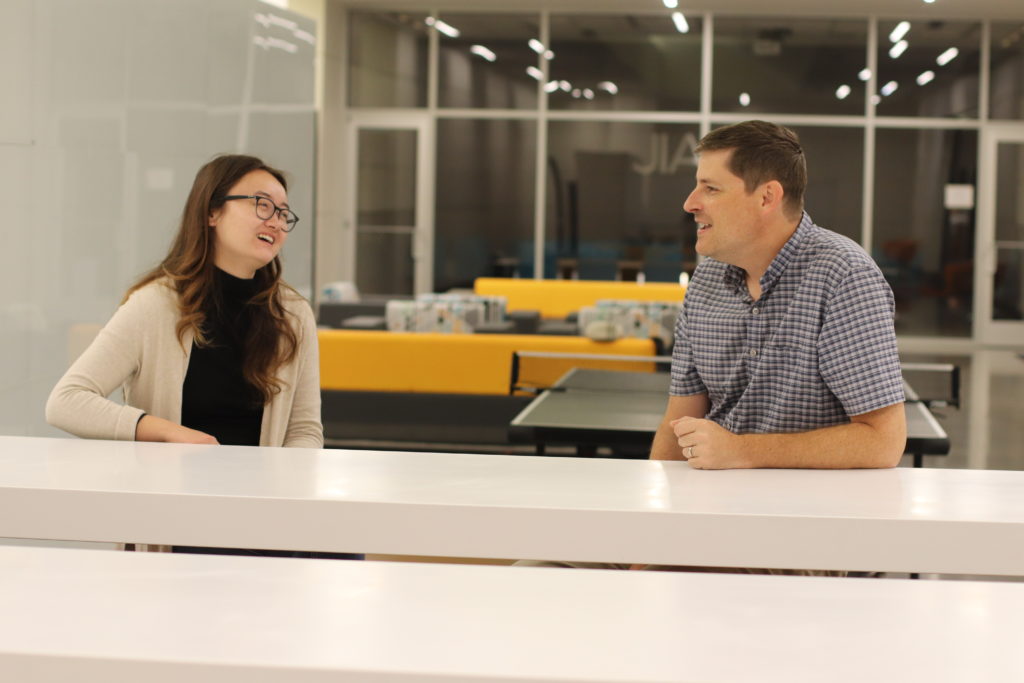By Graduate Student Melanie Buziak. Photography by Randall Brown.
Assistant Professor Eric Lass joined the MSE faculty in 2019, adding his expertise in phase transformations and more to the Big Orange research roster. Melanie Buziak is a graduate research assistant in the department who works with Lass. Buziak also did her undergraduate studies at UT.
Buziak: You’re known among MSE students for being passionate about teaching and research. Can you tell me about what in your student experience inspired you to get a PhD and go on to teach?
Lass: Since I was about 13 years old, I wanted to be an elementary school teacher. But my mother encouraged my interest in math and science and pushed me to pursue engineering, so I went to undergraduate school for engineering. About halfway through my undergraduate career, I realized that I could do both. I went to graduate school specifically to become a teacher. I found that I just absolutely love doing research as well. Now I’ve been here for two years and I could not have made a better decision. I just love teaching; I love showing students the passion that’s kept me going for 15 years.
Buziak: I also wanted to be a teacher. I wanted to teach high school English. My mom also told me to go into something with math and science, so it’s very funny that you say that. If you could teach any class, what would it be?
Lass: It would be the phase transformations class.
Buziak: I knew you would say that.
Lass: It was the course I remember best from graduate school, and that has stuck with me. The phase transformations class—that’s my bread and butter.
Buziak: As you mentioned, you teach a split undergraduate/graduate-level phase transformations class and a sophomore-level lab class. What is it like to teach students in every range of their MSE education?
Lass: It’s really, really interesting. I’ve only taught the sophomores once, then I taught the seniors and the grad students once in the spring. It’s interesting to see the different perspectives and how much they’ve grown. To be able to teach the seniors in their last semester is interesting— to see how ready they are for the real world.
Buziak: As a phase transformations and solidification expert, where your field can be used in any class of material, any area, what is it like to work with people who specialize in specific materials or specific areas as someone whose specialization is at the core of everything?
Lass: Part of the reason that I’ve plotted this course is because I can teach you the fundamentals and you can take those and you can apply them. Not only that, but we’re experimentalists. We’re also sitting here using ThermoCalc. We can really act as the glue between different disciplines.
Buziak: Where do you see yourself in, let’s say, 15 years? That’ll be 17 years of teaching under your belt.
Lass: Right now, I see myself as an Eric version of a big name. Not just a big name in phase transformations but a big name as a professor here that has been given a reputation by students that Hey, this guy, this guy’s really passionate. I made the move to academia. I’m absolutely thrilled with that move, and right now I just love my job.
